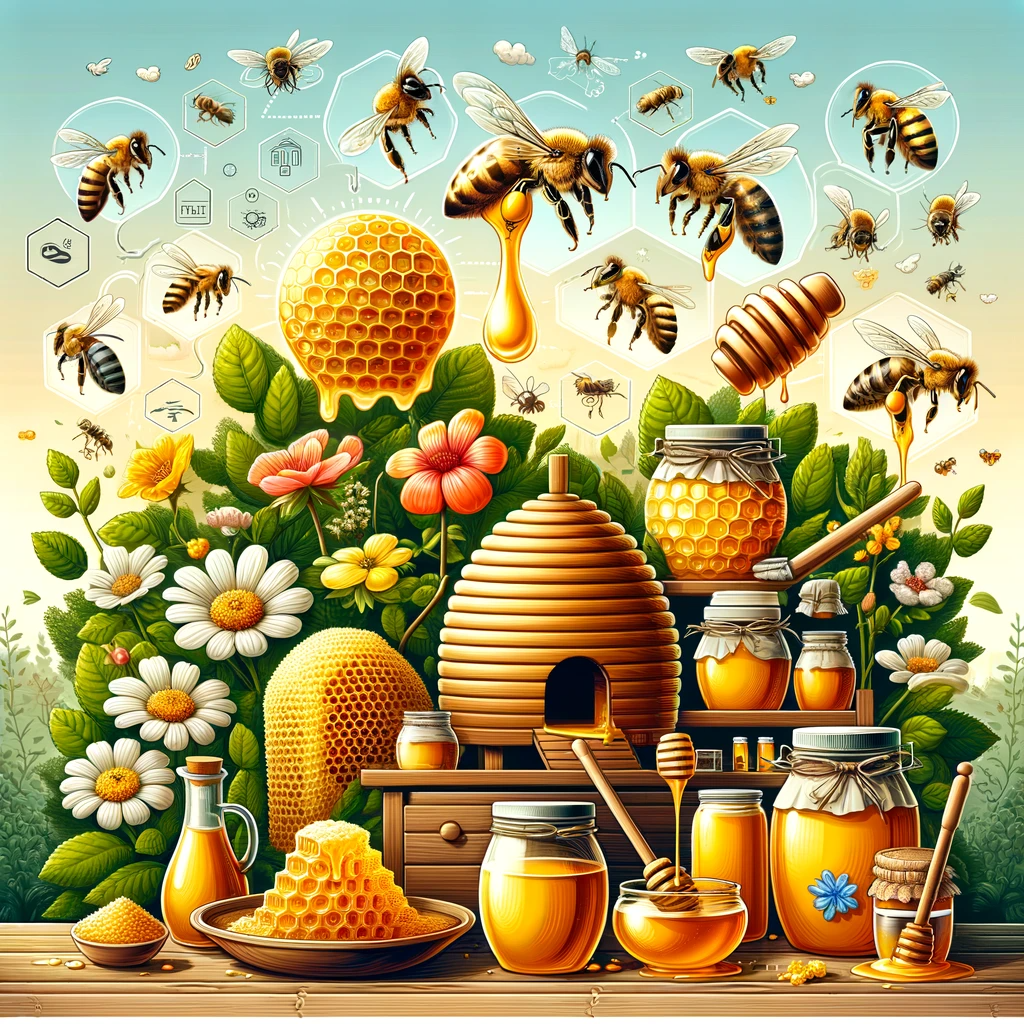Honey, often referred to as “liquid gold,” has a rich history deeply intertwined with American culture and heritage. This natural sweetener, produced by bees from the nectar of flowers, has been used in various forms throughout the centuries, shaping culinary traditions, folk remedies, and even political symbolism in the United States. In this article, we delve into the fascinating journey of honey in American history, exploring its role as a versatile ingredient that has left an indelible mark on the nation’s culinary and cultural landscape.
The Indigenous Roots of Honey
Honey’s presence in North America predates European colonization. Indigenous peoples, including Native American tribes, had a deep appreciation for honey as both a food source and a valuable commodity. They harvested wild honey from native bee species, such as the stingless bee, and incorporated it into their diets, often using it as a sweetener for corn-based dishes and beverages.
1. Indigenous Beekeeping Techniques
Some tribes practiced rudimentary beekeeping methods, such as constructing hollowed-out logs to attract wild bees. They used smoked fires to calm the bees, allowing them to harvest honeycomb with minimal disturbance.
2. Cultural Significance
Honey played a role in Native American ceremonies and rituals, symbolizing sweetness and the abundance of nature. It was often shared as a symbol of goodwill and hospitality.
Colonial Era: Honey Finds Its Place
As European settlers arrived in North America, they brought with them honeybees (Apis mellifera) from their homelands. This introduction of honeybees marked a turning point in honey production in the New World.
1. The Role of Honeybees
Honeybees, unlike native bee species, were prolific honey producers. They thrived in the American environment and significantly increased honey yields, making honey more widely available.
2. Honey in Colonial Cooking
Honey quickly became a crucial ingredient in colonial American cooking. It was used in a variety of dishes, from sweetening desserts to glazing meats and flavoring beverages. Recipes often featured honey as a primary sweetener.
3. Medicinal Uses
Honey was also valued for its perceived medicinal properties. It was used as a remedy for sore throats, coughs, and various ailments, making it an essential component of early American home remedies.
The Symbolic Significance of Honey in American History
Honey took on a symbolic role during pivotal moments in American history, representing unity, industry, and patriotism.
1. The Bee as a Symbol of Industry
The industrious nature of honeybees made them a symbol of diligence and hard work, qualities highly valued by early American settlers. Bees and honey were often used in political propaganda and literature to encourage productivity and self-reliance.
2. The Honeybee and the American Revolution
During the American Revolution, honeybees were seen as symbols of resistance against British oppression. Patriot leaders like Samuel Adams and Thomas Jefferson referenced bees and honey in their writings, drawing parallels between the colonies’ struggle for independence and the bees’ collective efforts in building their hives.
3. The Honeybee as a State Symbol
Honeybees left an indelible mark on American culture by becoming the state insect of several states, including Georgia and Vermont. This recognition reflects the enduring significance of honeybees and honey in the nation’s history.
Modern-Day Honey: A Culinary Treasure
Today, honey continues to be a beloved ingredient in American cuisine, appreciated for its unique flavors and versatility.
1. Culinary Applications
Honey is used in a wide range of dishes, from drizzling over breakfast cereal to enhancing the flavors of sauces and dressings. Local honey varieties are prized for their distinct flavor profiles, influenced by the regional flora.
2. Honey as a Health Food
In recent years, honey has gained popularity as a natural and healthier alternative to refined sugars. It is sought after for its potential health benefits, including antioxidant properties and potential allergy relief.
3. Supporting Beekeeping
The importance of honeybees in pollination and the ecosystem has led to increased awareness and support for beekeeping initiatives. Many individuals and organizations promote beekeeping to protect honeybee populations and sustain honey production.
Conclusion: Honey’s Enduring Legacy
Honey has played an essential role in shaping American culture and history. From its indigenous roots to its symbolic significance during key historical events and its continued presence in modern cuisine, honey remains a cherished ingredient that connects us to our past while enriching our present. As we savor the sweetness of honey, we also honor the generations of Americans who have valued and celebrated this remarkable gift of nature.
In conclusion, honey is not just a sweet ingredient; it is a thread woven through the tapestry of American history, culture, and culinary traditions. Its journey from the indigenous tribes to the present day is a testament to its enduring legacy. So, the next time you enjoy a spoonful of honey in your tea or drizzle it over your pancakes, remember the rich history and cultural significance that this golden elixir carries with it.
